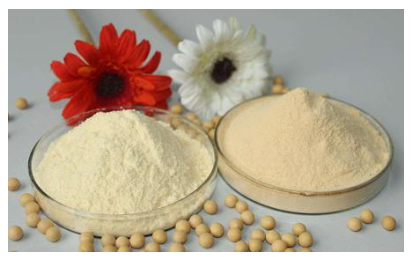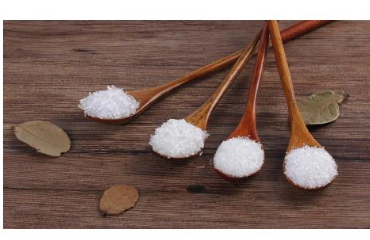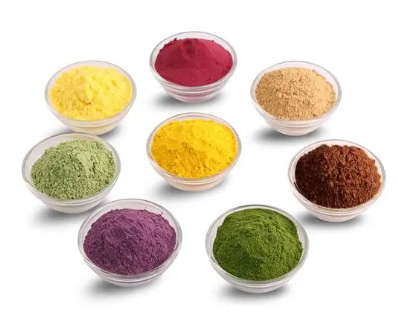The performance characteristics and application of common food additives are explained
May 24, 2024
Food additives can be divided into natural food additives and synthetic food additives according to the source. According to the function of the classification, mainly include: nutrition fortification agent, preservative, antioxidant, thickening agent, emulsifier, chelating agent (including stabilizer and coagulant), flavoring agent, color treatment, food flavor, flavor, etc. 1. Food preservatives

Food preservatives are a kind of additives to inhibit food spoilage and deterioration, prolong storage and freshness. At present, there are four types of food preservatives commonly used: benzoic acid and its salts, sorbate and its salts, propionic acid and its salts, and p-hydroxybenzoates. 1) Benzoic acid and its sodium salt Benzoic acid, also known as benzoic acid, is a commonly used organic fungicide. In low pH environments, benzoic acid is effective against a wide range of microorganisms, but weak against acid-producing bacteria. When the pH is higher than 5.5, it has no effect on many molds and yeasts. The optimum pH value of benzoic acid for bacteriostasis is 2.5-4, and the minimum mass fraction for complete inhibition of general microorganisms is 0.05% ~ 0.1%. 2) Sorbate and its salts Sorbate, known as 2, 4-monoadienoic acid, is a broad-spectrum food preservative. 3) Propionic acid and its salts Propionic acid is a liquid with a similar acid flavor to acetic acid stimulation, because it is a normal intermediate of human metabolism, it is non-toxic, and its ADI value is not limited. Propionic acid is effective against molds, aerophilic bacteria, gram-negative bacteria, especially Escherichia coli, which makes bread become filamentous, and can prevent the production of aflatoxin, so it is often used in the production of bread and pastries. Propionate has the same preservative effect, and calcium salt and sodium salt are commonly used. 4) p-hydroxybenzoic acid and its esters Parabens, also known as paraben ester, is colorless crystal or white crystalline powder, tasteless and odorless. Mainly used in soy sauce, jam, refreshing drinks and so on. The anti-corrosion effect is better than benzoic acid and its sodium salt, the amount of use is about 1/10 of sodium benzoate, and the appropriate pH value is 4-8. The toxicity of p-hydroxybenzoate is lower than that of benzoic acid, its water solubility is poor, and it is commonly used to dissolve alcohols before using, and its price is also higher. 5) Natural food preservatives Natural preservatives have the advantages of strong antibacterial, safe and non-toxic, good water solubility, good thermal stability, wide range of action, not only harmless to human health, but also has a certain nutritional value. Recent research and development of natural preservatives are: natamycin, glucose oxidase, protamine, lysozyme, polylysine, chitosan, pectin decomposition, propolis, tea polyphenols and so on. 2, food emulsifier and thickener

Food emulsifiers and thickeners are additives to improve and stabilize the physical properties of each component of food or improve the state of food organization, and play an important role in the "shape" and "quality" of food and food processing performance. 1) Emulsifier Any food additive that adds a small amount of liquid (such as oil and water) that can form a stable emulsion that is incompatible with each other is called emulsifier. ① fatty acid glycerides Glycerol reacts with fatty acids to form single, double and triesters. Single fatty acid glyceride, referred to as single glyceride, is an important food emulsifier, widely used in shortening, pastry, bread, candy, ice cream, emulsification, foaming, anti-crystallization, anti-aging. ② sucrose fatty acid ester Sucrose fatty acid ester is a kind of emulsifier with good performance, high efficiency and safety. Sucrose fatty acid esters are hydrophilic based on sucrose and oleophilic based on long carbon chain fatty acid, which can be digested into sucrose and fatty acid and absorbed in the body. Sucrose fatty acid esters are non-toxic, non-irritating and easily biodegradable, so there is no limit to their use in food. ③ Sorbitan fatty acid ester The product name of sorbitan fatty acid ester is span, and the emulsifier of SPAN is added to ethylene oxide under the catalysis of base to obtain Tween(Twain) emulsifier. ④ soybean phospholipid Soybean lecithin, also known as soybean lecithin or phospholipid, is a light yellow or brown transparent, translucent viscous substance. It is a by-product of soybean oil production and is a natural surfactant. Its main components are lecithin, cephalin and inositol phospholipids. As an emulsifier, soybean phospholipid has excellent emulsification, antioxidant, dispersibility and moisturizing properties, and has been widely used in food, instant milk, margarine, granule beverage, nutrition emulsifier and so on. 2) Thickener
Thickener is a kind of food additive that can improve the viscosity and change the properties of food. gelatine Gelatin is a white or light yellow, translucent, microgloss flakes or fine particles, its main component is protein, is the animal skin, bone, cartilage contained in the collagen protein after partial hydrolysis and obtained by the polymer polypeptide polymer. Gelatin gel is tough, elastic, good pressure, dissolved in water at 30℃, and condensed into colloid after cooling. ② maltodextrin Maltodextrin, also known as water-soluble dextrin or enzymatic dextrin, is made of various starches as raw materials, hydrolysis conversion, purification and drying under low control by enzymatic process. Maltodextrin is widely used in candy, malted milk, fruit tea, milk powder, ice cream, beverage, canned food and other foods, and is a filling and thickening agent for all kinds of food. pectin Pectin is a polysaccharide substance widely found in plant tissues, its main component is galacturonic acid, is recommended by the FAO/WHO Joint Committee on Food additives, is not limited by the amount of food additives recognized as safe. At present, the main raw material of pectin production is citrus peel. ④ carrageenan Carrageenan is a natural plant gum extracted from red algae, and is the youngest of the three major algae gums: algin, agargel, carrageenan, and its main components are D-galactose and L-galactose. Carrageenan is extracted from raw materials such as euestrin, salsa and carrageenan. Carrageenan used in the food industry mainly has the characteristics of gel, viscosity, stability, emulsification and suspension, and is widely used in dairy products, ice cream, fruit juice drinks, breads, hydrogels (gels, etc.), meat products, canned food and other foods. ⑤ Xanthan gum Xanthan gum is a safe, non-toxic, tasteless new food additive with excellent thickening, suspension, emulsification, stability and other functions. Xanthan gum is an extracellular heteropolysaccharide produced by Xanthanomonas using starch as the main raw material through a series of biochemical reactions. Its main components are glucose, mannose, glucuronic acid, etc., with a molecular weight of up to millions, Xanthan gum is currently the most commercial value, the largest yield and the widest market coverage of microbial polysaccharide products at home and abroad. Xanthan gum has excellent thickening properties, and the required viscosity can be achieved by using a very low concentration. Xanthan gum can form a stable thickening system when co-existing with high concentrations of sugar or a variety of salts. 3. Seasoning

Flavoring agents mainly include sour agents, sweeteners, salty agents and bitters. Among them, the bitter agent is rarely used, and the salty agent (generally use salt) is not managed as a food additive in China. The following mainly introduces the acid flavor agent, sweetener. 1) Sour agent Food additives whose main purpose is to give food sour taste are called sour agents. Sour taste can promote the secretion of saliva, gastric juice, bile and other digestive juices, with the role of promoting appetite and digestive aid, its main role is to regulate the pH value of food, as an antioxidant enhancer, prevent food rancidity or Browning, inhibit microbial growth and prevent food spoilage. The acidic agents mainly include organic acids: citric acid, lactic acid, tartaric acid, malic acid, fumaric acid and adipic acid; Inorganic acids: edible phosphoric acid, carbonic acid, etc. ① citric acid Citric acid is colorless transparent crystal or white powder, with mild and refreshing sour taste, widely used in a variety of beverages, soda, wine, candy, snacks, biscuits, canned juice, dairy products and other food manufacturing. ② malic acid Malic acid is technically known as carboxysuccinic acid or hydroxysuccinic acid and is a white or fluorescent white solid. It has a special malic sour flavor, widely used in yogurt, soda, ice cream, chewing gum, ketchup, jam, vinegar, fruit wine, margarine and so on. Malic acid use effect is better than citric acid, strong sour taste, close to the taste of natural juice, pH adjustment effect is good. Using it instead of citric acid as a sour agent can save 20% of the amount, and can mask some of the odors produced by sucrose substitutes. 2) Sweetener
Sweetener is a food additive whose main purpose is to sweetening food. According to its source can be divided into natural sweeteners and synthetic sweeteners two categories. Natural sweeteners are divided into sugar and sugar derivatives, non-sugar natural sweeteners two categories. Artificial sweeteners are mainly some sweet chemicals, the sweetness is generally tens to hundreds of times higher than sucrose, and most of them have no nutritional value. ① Saccharin and sodium saccharin The chemical name of saccharin is o-sulfonyl benzoimide, no calories, high sweetness, saccharin sodium sweetness is 300-500 times that of sucrose, is an early development of a chemical synthetic sweetener. Since the beginning of the 20th century, it has been used in food, and China has more than 60 years of production and use history, with a production capacity of 40,000 t/ year, and is the world's major exporting country. ② Xylitol Xylitol is a kind of sugar alcohol made by reducing xylose or xylose in wood, corncob and other materials. Xylitol is white crystalline or crystalline powder, with a cool sweet taste, sweetness of 65% to 100% of sugar, calorific value of 12.5kJ/g, higher than other sugar alcohols, has the effect of inhibiting the activity of Proteus which forms dental caries. Xylitol in addition to sucrose, glucose commonality, but also has special biochemical properties, he does not need to be absorbed by the human body through the cell wall through insulin, and has the function of reducing blood lipids, anti-ketone bodies, can be used to make drinks, candy, canned food. ③ Stevioside Stevia side is colorless or light yellow needle-like crystal, melting point 196℃ ~ 198℃, is a mixture of glycosides extracted from plant stevia, relatively safe, sweetness is about 300 times that of sugar. Its taste is similar to sucrose, pure sweetness, long retention time, delicious after taste, heat, acid, alkali are very stable, is an ideal low-energy sweetener. ④ maltitol The sweetness of maltitol is 0.8 to 0.9 times that of sucrose, and it does not produce heat after ingestion, nor does it synthesize fat and stimulate cholesterol formation. The chemical properties of pure maltitol are very stable, and the heat resistance and acid resistance are better than that of sucrose, sorbitol and xylitol. Maltitol can resist the digestion of gastric juice, the hydrolysis of small intestine enzymes and the decomposition of large intestine microorganisms during human digestion. This special physiological properties make maltitol a good taste, no calories high-grade health sweetener. ⑤ Aspartame The chemical name is aspartyl phenylalanine methyl ester and the relative molecular weight is 294.31. Aspartame is a new type of amino acid sweetener, the appearance of white crystal or crystalline powder, pH: 4.5-6.0. Aspartame has a pure sweetness like granulated sugar, the sweetness is 200 times that of sucrose, no odor, and has a synergistic effect on food flavor. Good safety performance, metabolism in the body does not require insulin participation, can be quickly digested and absorbed, and will not cause dental caries. ⑥ Acesulfamil Chemical name is acetylsulfanilate potassium, molecular weight 201.24. Aceselhoney is a white crystalline powder with a high sweetness, which is about 200 times sweeter than sucrose (3% solution by mass fraction). ⑦ Other sweeteners There are mainly oligosaccharide, erythritol, cyclamate, somatose and so on. 4. Food coloring

Food coloring used in food coloring, its purpose is to increase the appetite for food and stimulate appetite. Food coloring is divided into two categories according to the source of artificial and natural colors. 1) Artificial pigment Synthetic pigments include amaranth, carmine, erythium, new red, lemon yellow, sunset yellow, indigo yellow, brilliant blue, and aluminum lake of various pigments to enhance the dispersibility of the above water-soluble acidic pigments in oil. ① Carmine Carmine is a red to deep red powder. It is characterized by good acid resistance and light resistance, but poor heat resistance and reduction resistance, and becomes brown in the case of alkali, and is mostly used in the processing of pastries, beverages, agricultural livestock and aquatic products. Lemon yellow Lemon yellow is an orange-yellow powder, which is allowed to be widely used in various countries, mainly for pastries, beverages, agricultural and aquatic products processing, medicine and cosmetics. It is characterized by good heat resistance, acid resistance, light resistance and salt resistance, poor oxidation resistance, slightly red in the case of alkali, and fading when reduced. 2) Natural pigments Natural pigments are extracted from plant and animal tissues with solvents. Although the color of natural pigments is slightly weak, the stability of light, heat, pH and so on is relatively poor, but the safety is higher than that of synthetic pigments, and the source is rich, and some natural pigments also have Vitamin activity or a certain pharmacological function, which is increasingly valued by people, production and sales growth is fast. The main edible natural pigment products in China are: caramel, red yeast rice and red yeast rice powder, red yeast red, chili oleoresin and chili red, mast yellow, mast blue, beet red, shellac red and so on. 02
General requirements and safe use of food additives

With the development of food toxicology, food additives originally considered harmless have been found to have chronic toxicity and teratogenic, mutagenic and carcinogenic hazards in recent years, so countries have given full attention to this. At present, the international and domestic treatment of food additives are strict management, strengthen evaluation and restrict the attitude of use. In order to ensure the safety of food additives, food additives should follow the following principles: ① Safety evaluation. The primary standard for evaluating the toxicity (or safety) of food additives is the ADI value (human daily intake), and the second commonly used indicator for evaluating the safety of food additives is the LD50 value (half lethal dose, also known as lethal medium dose). ② Use regulations. Gb2760-2024 National standards for food safety and standards for the use of food additives stipulate the principles for the use of food additives, the varieties of food additives allowed to be used, the scope of use and the maximum amount of use or residue.
Shaanxi Huike Botanical Development Co., Ltd. a integrated enterprise which is focus on natural products, Plant extract related products and services.We mainly focus on pharmaceutical, functional food, Freeze-dried powder,Natural Pigment,Homology of medicine and food,beverages and other business services.
For more information about inulin, please contact us!
Email:marketing@huikes.com
2024-05-24
Shaanxi Huike Botanical Development Co., Ltd.







